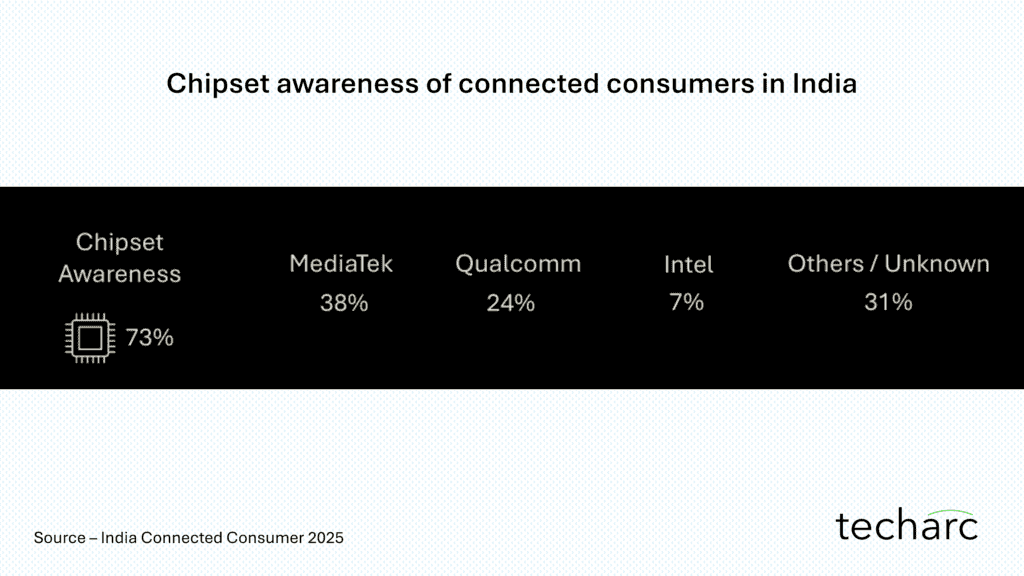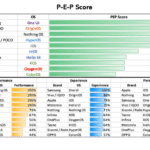The last decade was all about attaching connectivity to a bouquet of devices paving the way for IoT or Internet of Things. The decade ahead is all about Intelligence of Things!
The attach rate of processors is on the rise across a host of devices or smart devices. With the unique trinity between connectivity, data and intelligence, the devices are becoming self-evolving capable of replicating ‘human-like’ intelligence and behaviour. Devices are becoming powerful, first with AI and now with GenAI. This is giving a new meaning to IoT where intelligence is taking over internet!
In our recently published ‘India Connected Consumer 2025’ report, now in its 5th edition, we revealed several powerful insights that are hinting towards some major shifts in consumer behaviour and approach about these connected devices. One among them is the level of awareness about a chipset or processor or SoC. Some 15 years ago, even in case of smartphones, the name of the chipset was not known to all. In fact, in may lower tier smartphones, the OEM would not even reveal the chipset maker. But in mid to premium range, it became a norm to mention the name of the chipset provider that primarily made Qualcomm and MediaTek popular names across tech community and even within consumers. Today, not only consumers know these two fabless chipset makers, but also their chipset families like Snapdragon, Dimensity, Helio, etc., to name a few. As per our recent study, 73% of the connected consumers in India are aware that their device is powered by a chipset. This is great because better understanding about the processor will help consumers purchase good devices which can deliver them the experiences they are looking for and also run AI and other application layers on top of it. Again, the survey revealed that 41% of the connected consumers dig deep while making their purchase decision and look for details including the processor and other technologies that enhance the experience. These technologies include Dolby Atmos and Vision, as an example.

Within the smart devices, MediaTek has a better presence compared to others like Qualcomm, Intel, etc. This is owing to the fact that MediaTek chipsets are present in several smart devices including the large volume sales gadgets like Smart TV. Tablets is common to both, apart from smartphones. MediaTek also powers smart speakers and Chromebooks. Qualcomm has just recently expanded into laptops. Auto is another common area where both are developing their markets. If we look at it from present Indian context, Qualcomm has made progress on the cars while MediaTek has wins in the 2-wheeler market, while both are also engaging in other segments too.
The non-smartphone portfolio is becoming important for all the OEMs, even the ones that are pureplay smartphone makers. With the smartphone sales hitting a plateau and now focus back on the affordable segments of the market, smartphone, the ‘jewel of electronics’ is unlikely to be able to continue propel sustainable growth in revenues for the companies. They need to look for growth outside the smartphone as a product. The chipset companies have already realised this, which is why as per the latest quarterly financials announced by Qualcomm and MediaTek, the non-smartphone revenues contribute 30% and 40% respectively for these two arch-rival chipset makers. As per the ‘India Connected Consumer 2025’ report findings, along with the quarterly results announced, MediaTek seems to be in relatively comfortable position from product diversity where it can further develop upon the presence in several non-smartphone products. However, Qualcomm is catching up fast and we should be see it also increasing its non-smartphone revenue contributions in markets like India as well, where the laptops powered by its Snapdragon X Elite processor will be commercially available in the market from multiple OEMs competing directly with Intel and AMD powered laptops besides the MacBook.





